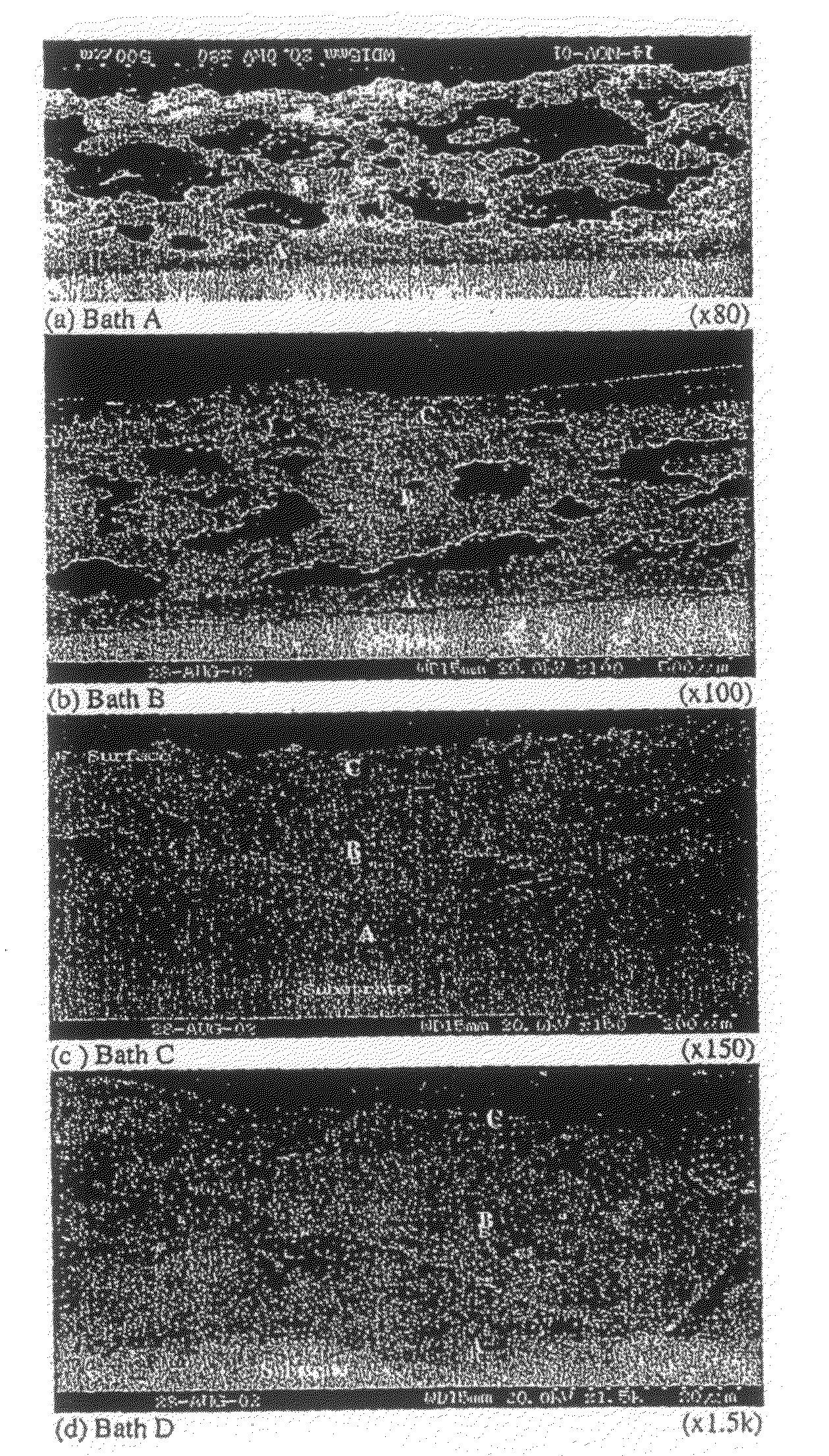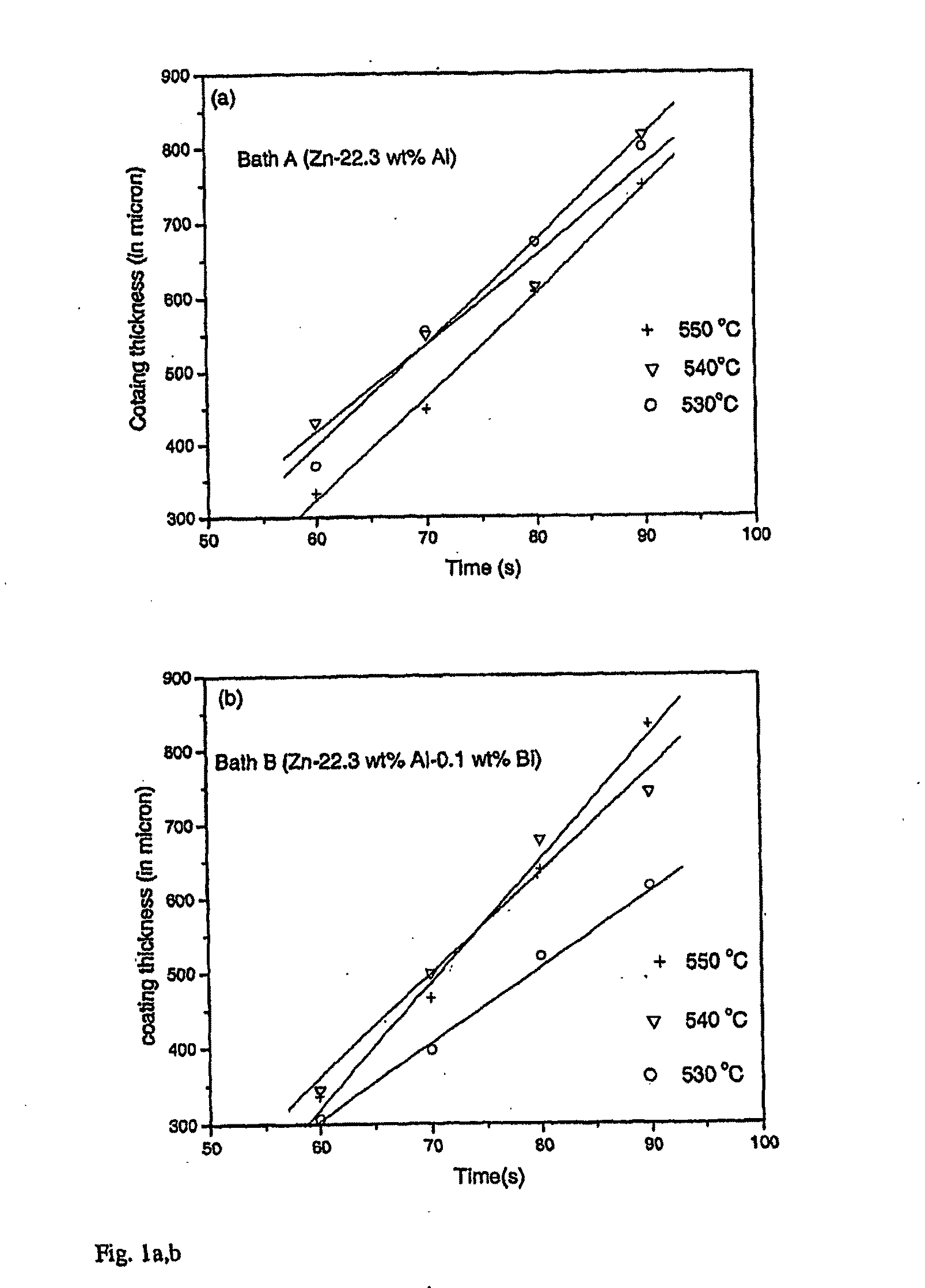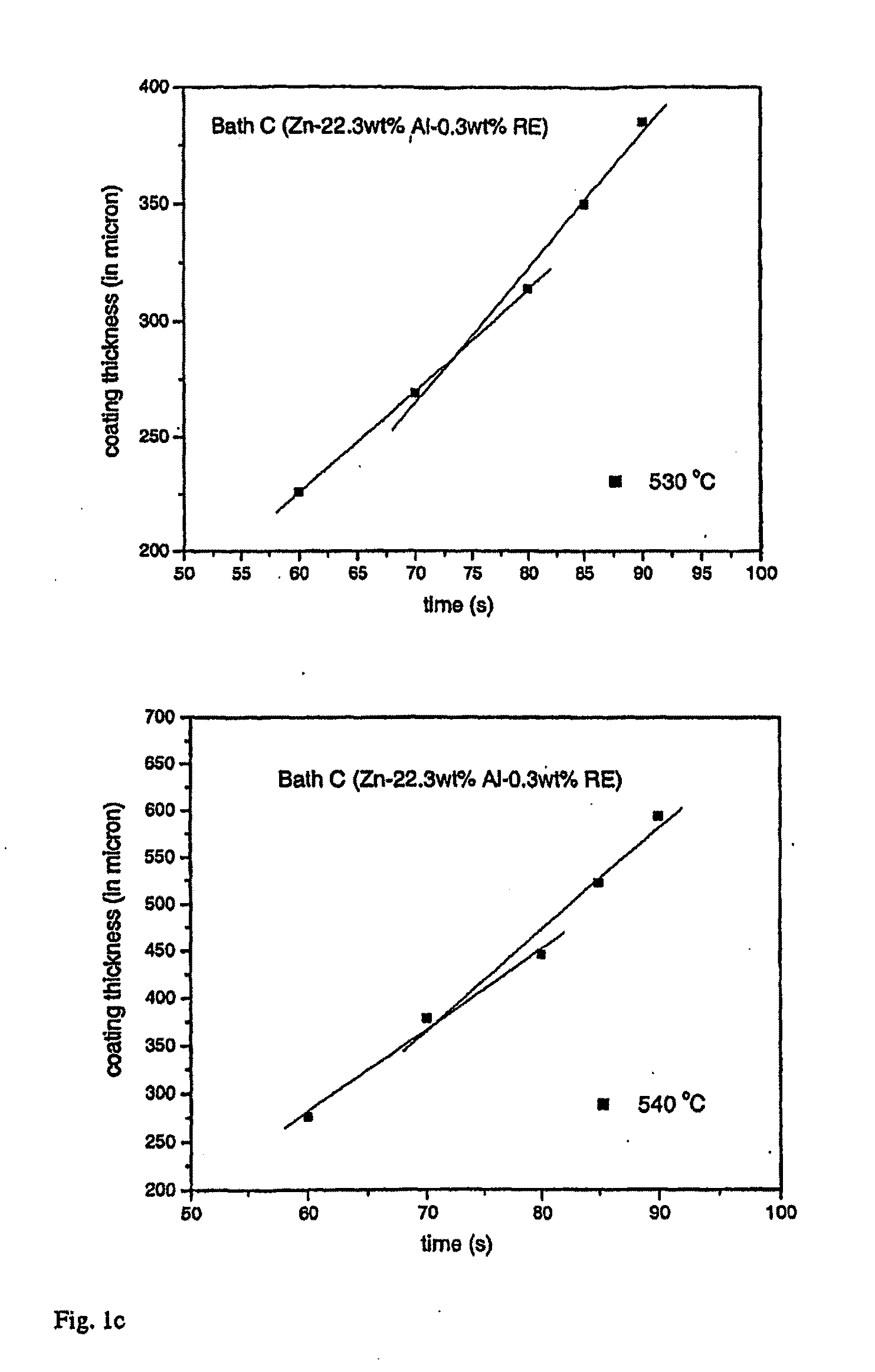Effect of Ternary Additions on the Structure and Properties of Coatings Produced by a High Aluminum Galvanizing Bath
a technology of high aluminum galvanizing bath and addition, which is applied in the direction of liquid/solution decomposition chemical coating, coating, solid/suspension decomposition chemical coating, etc., can solve the problems of detriment to the formability of coated steel, and achieve the effect of reducing the corrosion resistance of the coatings produced by zn—al eutectoid galvanizing alloy and reducing the loss of corrosion
- Summary
- Abstract
- Description
- Claims
- Application Information
AI Technical Summary
Benefits of technology
Problems solved by technology
Method used
Image
Examples
Embodiment Construction
[0023]The present invention relates to a Zn—Al based galvanizing bath, comprising small amounts of Bi, rare-earth (RE) and / or Si. In such a bath, the coating formed has three layers: (1) an interface layer; (2) an intermediate layer; and (3) an overlay. The coatings produced by the binary Zn—Al, Zn—Al—Bi and Zn—Al-RE are porous and show linear growth The coatings produced by Zn—Al—Si bath are non-porous and exhibit parabolic growth. Chemical analysis of different layers of coatings show that the interface layer is mainly composed of the Fe2Al5 phase, whereas the intermediate layer shows the presence of two phases—one rich in Al and the other rich in Zn. A depletion layer is observed only in the case of coatings produced by Zn—Al—Si bath. Most of the porosities are found to contain Al oxide. A eutectoid microstructure is observed in the case of coatings produced by Zn—Al—Si bath.
[0024]The coatings produced by these baths exhibit different growth rates and morphologies. The growth kin...
PUM
| Property | Measurement | Unit |
|---|---|---|
| Temperature | aaaaa | aaaaa |
| Temperature | aaaaa | aaaaa |
| Fraction | aaaaa | aaaaa |
Abstract
Description
Claims
Application Information
 Login to View More
Login to View More - R&D
- Intellectual Property
- Life Sciences
- Materials
- Tech Scout
- Unparalleled Data Quality
- Higher Quality Content
- 60% Fewer Hallucinations
Browse by: Latest US Patents, China's latest patents, Technical Efficacy Thesaurus, Application Domain, Technology Topic, Popular Technical Reports.
© 2025 PatSnap. All rights reserved.Legal|Privacy policy|Modern Slavery Act Transparency Statement|Sitemap|About US| Contact US: help@patsnap.com



